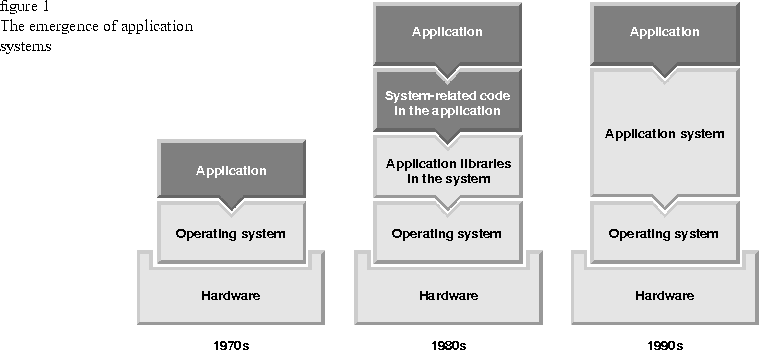Personal computer operating systems, such
as CP/M, ProDOS©, and MS-DOS, began to emerge in the late 1970s and early
1980s. At first these operating systems consisted of abstractions that
represented hardware devices, such as the terminal, printer, or disk drive. For
example, instead of writing a lot of code to move a specific kind of disk drive
head from place to place on a disk, programmers could write simpler code that
used an operating system abstraction to write a file to the disk. They could
concentrate more on the needs of the applications they were writing, using the
operating system to manipulate the hardware as necessary.
This led to the three-tier arrangement shown on the left side of Figure 1, with
clear-cut barriers between the hardware, the operating system, and an
application. To communicate across the barrier between the application and the
operating system, programmers learned to use application program interfaces
(APIs), the commands and definitions supported by the operating system. This
arrangement provided high-level abstractions of the hardware for programmers to
use instead of dealing with it directly. The operating system took care of the
hardware, so the application didn't have to. 
[Contents]
[Previous]
[Next]
Addison-Wesley Publishing Company, Copyright©1995 by Sean Cotter
and Taligent,Inc. All rights
reserved.

